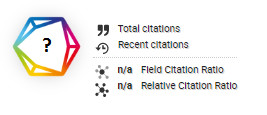Laser Distance-Based Digital Weight and Height Measurement System with Thermal Printer Output
DOI:
https://doi.org/10.46984/sebatik.v28i2.2490Keywords:
Height, Weight, Sensor, Scale Bar, SensorAbstract
The growth and development of a person's body can be influenced by various factors, including hereditary traits, environmental conditions, and dietary habits. One method to assess a person's physical growth and development is by comparing weight and height, commonly analyzed through the Body Mass Index (BMI). To perform this analysis, accurate measurements of weight and height are required. The tool developed in this study simplifies this process by enabling simultaneous measurement of weight and height. Weight measurement is conducted using a weight sensor (Load Cell) positioned under the user's footing, similar to a typical tire scale. Height measurement, on the other hand, utilizes a laser-based distance sensor (VL53L1X) placed above the patient's head. This approach differs from traditional height measurement methods that rely on sound-based distance sensors, which often yield less accurate results due to factors such as uneven head surfaces, varying hair textures, and diffused sound waves. To address these limitations, the developed system incorporates a Scale Bar or plate that moves up and down automatically, providing a flat, stable measurement plane. This ensures more precise height measurements by focusing the laser sensor's reflection on a uniform surface. From the results of measurements on several patients, the developed tool demonstrated an average difference of only 0.3 cm for height and 0.09 kg for weight, indicating high accuracy and reliability in body measurement.
References
Abidin, M.S. (2023) “Desain Sistem Analisa Indeks Massa Tubuh, Kadar Lemak, Dan Kebutuhan Kalori Gizi Dengan Output Thermal Printer,” 27(2), hal. 1–9. Tersedia pada: https://doi.org/10.46984/sebatik.v27i2.0000.
Afdali, M., Daud, M. dan Putri, R. (2017) “Perancangan Alat Ukur Digital untuk Tinggi dan Berat Badan dengan Output Suara berbasis Arduino UNO,” Jurnal ELKOMIKA, 5(1), hal. 106–118.
Afif, U.M. dan Purnama, S. (2021) “Aplikasi Perhitungan Nilai Kalori Bahan Makanan Berbasis Anroid,” Journal of SPORT (Sport, Physical Education, Organization, Recreation, and Training), 5(2), hal. 55–64. Tersedia pada: https://doi.org/10.37058/sport.v5i2.2751.
Agsa, F., Hilman, F.T.S.P. dan Nugraha, R. (2021) “Perancangan Alat Hitung Nutrisi Makanan Berbasis Arduino Uno Design of Food Nutrition Counting Tool Based on Arduino Uno,” e-Proceeding of Engineering, 8(4), hal. 3897–3907.
Arbianto, H. (2018) Rancang bangun alat pengukur berat badan dan tinggi Badan balita dengan metode antropometri berbasis Arduino uno.
Arsita Harnawati, R. dan Adevia Maulidya Chikmah (2024) “Menejemen Makan Tinggi Kalori Terhadap Peningkatan Lila (Lingkar Lengan Atas) Pada Ibu Hamil Kek (Kekurangan Energi Kronik),” Jurnal Kesehatan Masyarakat Indonesia (JKMI), 1(3), hal. 1–5. Tersedia pada: https://doi.org/10.62017/jkmi.v1i3.1008.
Atmel (2009) “Datasheet Atmega328,” Atmel Corporation [Preprint].
Bambang supriyo, I.S. (2019) “Pendeteksi jarak halangan pada robot beroda menggunakan sensor laser,” Seminar Nasional Hasil penelitian dan pengabdian masyarakat Polines [Preprint].
Budiarti, E. dkk. (2023) “Meningkatkan Pemahaman Pentingnya Makan Makanan Bergizi Seimbang Melalui Kegiatan Makan Bersama Di Ra Al Fata Rokan Hulu,” HEALTHY : Jurnal Inovasi Riset Ilmu Kesehatan, 1(4), hal. 218–229. Tersedia pada: https://doi.org/10.51878/healthy.v1i4.1817.
Elec Freaks (2013) “Datasheet: Ultrasonic Ranging Module HC - SR04 .”
Hilal, Y.N., Muliandhi, P. dan Ardina, E.N. (2023) “Analisa Balancing Bms (Battery Management System) Pada Pengisian Baterai Lithium-Ion Tipe Inr 18650 Dengan Metode Cut Off,” Simetris: Jurnal Teknik Mesin, Elektro dan Ilmu Komputer, 14(2), hal. 367–374. Tersedia pada: https://doi.org/10.24176/simet.v14i2.9852.
Inayah, I. (2021) “Analisis Akurasi Sistem Sensor IR MLX90614 dan Sensor Ultrasonik berbasis Arduino terhadap Termometer Standar,” Jurnal Fisika Unand, 10(4), hal. 428–434. Tersedia pada: https://doi.org/10.25077/jfu.10.4.428-434.2021.
Mukhammad, Y., Santika, A. dan Haryuni, S. (2022) “Analisis Akurasi Modul Amplifier HX711 untuk Timbangan Bayi,” Medika Teknika : Jurnal Teknik Elektromedik Indonesia, 4(1), hal. 24–28. Tersedia pada: https://doi.org/10.18196/mt.v4i1.15148.
Products dkk. (2002) “L293, l293d quadruple half-h drivers,” Office, 103(September 1986), hal. 626–631. Tersedia pada: http://dx.doi.org/10.1073/pnas.0507535103.
Purwanto, H., D. (2020) “Komparasi Sensor Ultrasonik HC-SR04 Dan JSN-SR04T Untuk Apikasi Sistem Deteksi Ketinggian Air,” Jurnal SIMETRIS, 10(2), hal. 717–724.
Rasyid, M.F.A. (2021) “Pengaruh Asupan Kalsium Terhadap Indeks Masa Tubuh (IMT),” Jurnal Medika Hutama , 2(4).
STMicroelectronics (2022) “A new generation, long distance ranging Time-of-Flight sensor based on ST’s FlightSenseTM technology,” STMicroelectronics, (November), hal. 1–35. Tersedia pada: https://www.st.com/resource/en/datasheet/vl53l1x.pdf.
Subandi, S., Novianta, M.A. dan Athallah, D.F. (2021) “Rancang Bangun Pembatasan Pemakaian Air Minum Berbasis Arduino Mega 2560 Pro Mini Dengan Sensor Water Flow Yf-S204,” Jurnal Elektrikal, 8(492), hal. 1–9.
Urbach, T.U. dan Wildian, W. (2019) “Rancang Bangun Sistem Monitoring dan Kontrol Temperatur Pemanasan Zat Cair Menggunakan Sensor Inframerah MLX90614,” Jurnal Fisika Unand, 8(3), hal. 273–280. Tersedia pada: https://doi.org/10.25077/jfu.8.3.273-280.2019.
Yultrisna dkk. (2021) “Rancang Bangun Timbangan Buah Digital Berbasis Mikrokontroler Dengan Koneksi Printer Thermal,” Jurnal Teknologi Manufaktur , 13(2).
Downloads
Published
How to Cite
Issue
Section
License
Copyright (c) 2024 Muhammad Sainal Abidin, Aryani Adami , Desak Ketut Sutiari, Ridia Utami Kasih

This work is licensed under a Creative Commons Attribution 4.0 International License.
Authors retain all their rights to the published works, such as (but not limited to) the following rights; Copyright and other proprietary rights relating to the article, such as patent rights, The right to use the substance of the article in own future works, including lectures and books, The right to reproduce the article for own purposes, The right to self-archive the article








